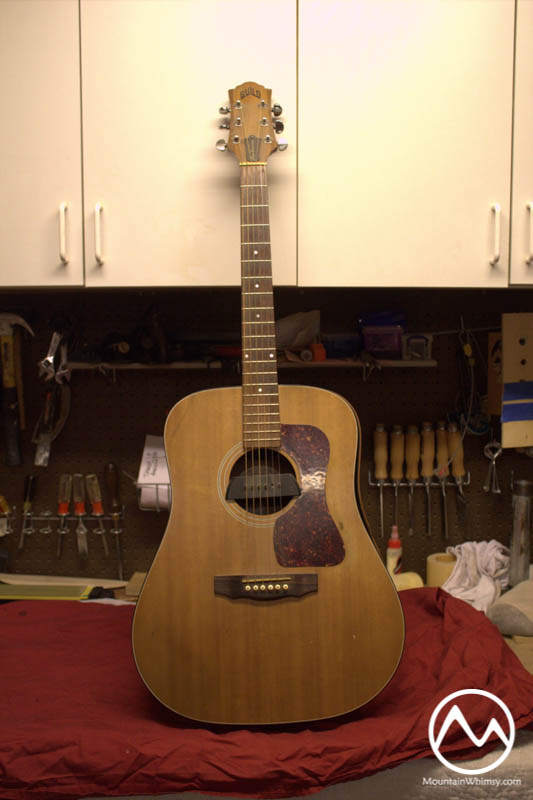 But it was the back story on the guitar that made it something special. This guitar belonged to a local musician who loved three things, his family, his guitar and his motorcycle. This was his traveling guitar and stayed strapped to the back of his bike as he toured around the west.
But it was the back story on the guitar that made it something special. This guitar belonged to a local musician who loved three things, his family, his guitar and his motorcycle. This was his traveling guitar and stayed strapped to the back of his bike as he toured around the west.
As most of these stories go, riding a motorcycle caught up to him one day. I don’t know the details, but it was apparently not a matter of pushing the bike too hard. But when rider, bike and guitar encounter a guard rail, the guard rail usually wins.
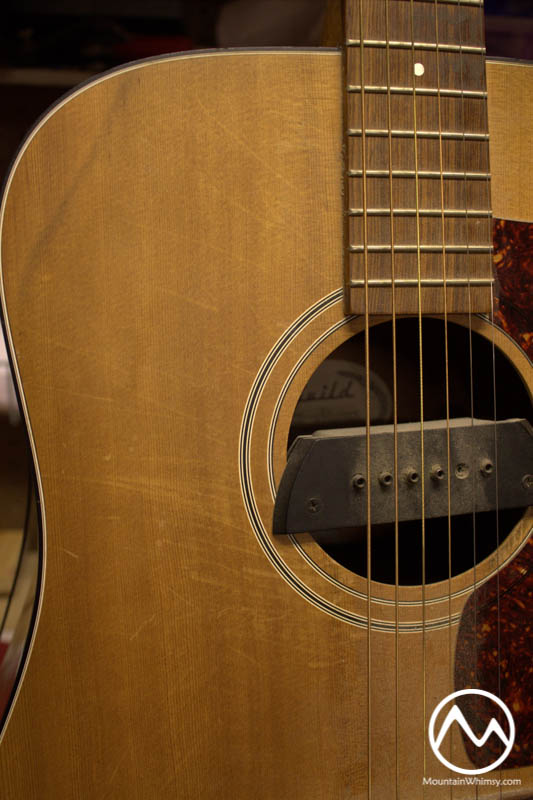 The family has not been able to toss this guitar in the trash. My friend brought it to the local shop and they quoted him $1000, after suggesting that it should just be trashed. That’s when he thought of me. And I was more than happy to take it on for a small fraction of the original quote. Mainly just to build my skill set, cover materials, and the cost of a new back/side set for my next build.
The family has not been able to toss this guitar in the trash. My friend brought it to the local shop and they quoted him $1000, after suggesting that it should just be trashed. That’s when he thought of me. And I was more than happy to take it on for a small fraction of the original quote. Mainly just to build my skill set, cover materials, and the cost of a new back/side set for my next build.
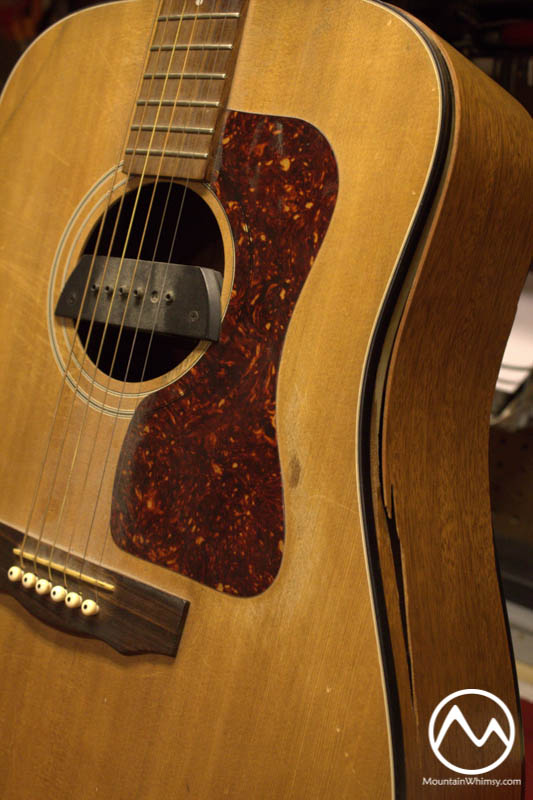 Here’s the rundown:
Here’s the rundown:
1) Cracked side running from the upper bout to about halfway around the lower bout. Most of this was a clean crack, but some sections were more fractured.
2) That same side was separated from the kerfing around the upper bout, to the waist. Interesting thing here is that I could detect almost no glue on either surface. I guess that’s what you get from a $350 guitar.
3) Small crack on the sound board from the bridge to the tail block.
4) The back binding was separated on the top edge around the waist. It looks like it must have shrank from heat because it was almost impossible to get it to lay flat.
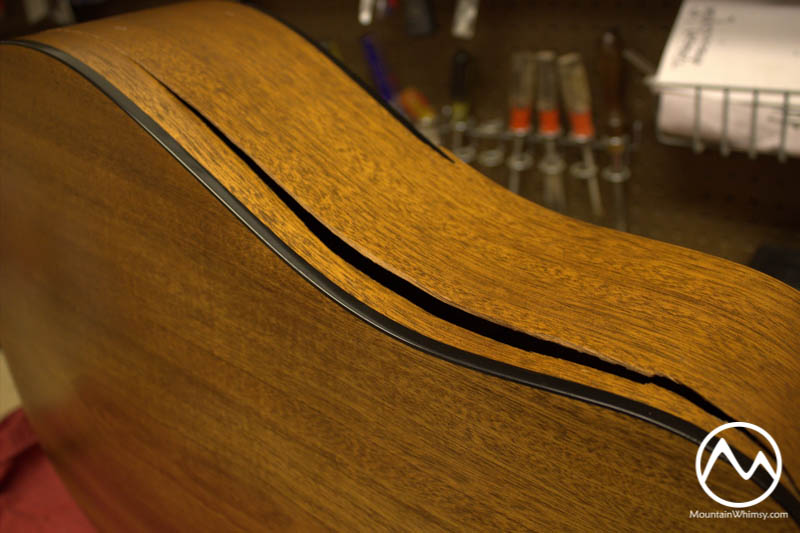 All pretty doable, and we agreed to leave the fixes pretty rough to acknowledge the history of the guitar, while still making it playable.
All pretty doable, and we agreed to leave the fixes pretty rough to acknowledge the history of the guitar, while still making it playable.
I started by stabilizing the cracks so they would not continue to propagate around the side.
 Next I reattached the side to the kerfing. It was easier to do this before continuing to piece the side back together. A clamping form and small wedges ensured a tight fit.
Next I reattached the side to the kerfing. It was easier to do this before continuing to piece the side back together. A clamping form and small wedges ensured a tight fit.
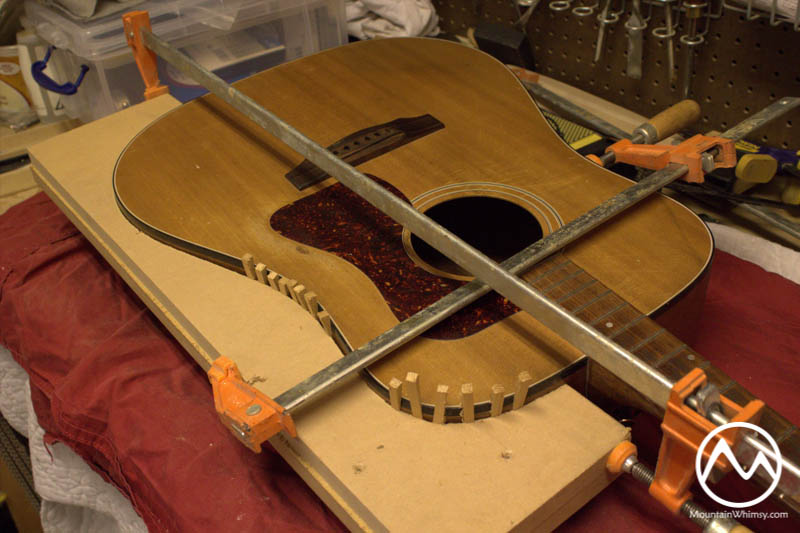
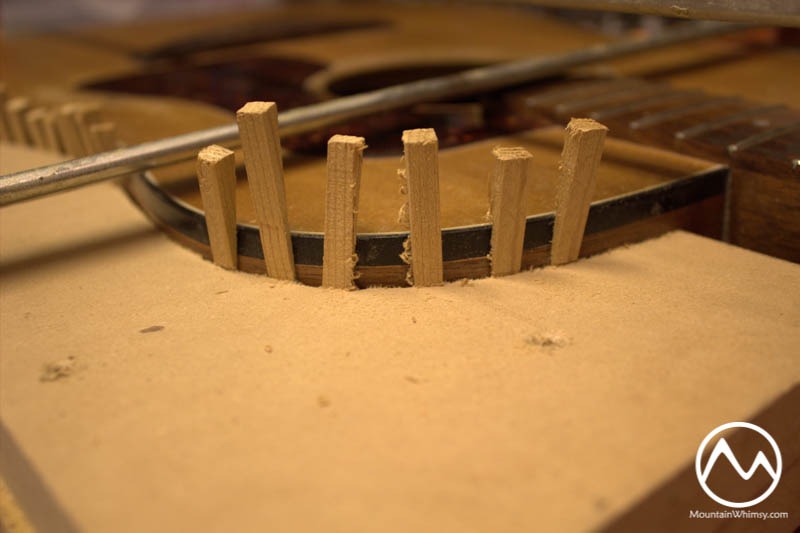 More to come.
More to come.
1 Comment
-
Looking forward to the next few entries.
